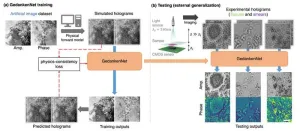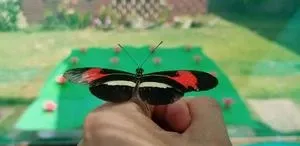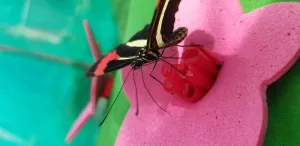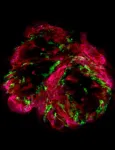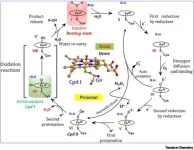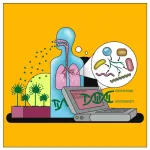(Press-News.org) Researchers from the UCLA Samueli School of Engineering have unveiled an artificial intelligence-based model for computational imaging and microscopy without training with experimental objects or real data.
In a recent paper published in Nature Machine Intelligence, UCLA’s Volgenau Professor for Engineering Innovation Aydogan Ozcan and his research team introduced a self-supervised AI model nicknamed GedankenNet that learns from physics laws and thought experiments.
Artificial intelligence has revolutionized the imaging process across various fields — from photography to sensing. The application of AI in microscopy, however, has continued to face persistent challenges. For one, existing AI-powered models rely heavily on human supervision and large-scale, pre-labeled data sets, requiring laborious and costly experiments with numerous samples. Moreover, these methodologies often struggle to process new types of samples or experimental set-ups.
With GedankenNet, the UCLA team was inspired by Albert Einstein’s hallmark Gedanken experiment (German for “thought experiment”) approach using visualized, conceptual thought experiments in creating the theory of relativity.
Informed only by the laws of physics that universally govern the propagation of electromagnetic waves in space, the researchers taught their AI model to reconstruct microscopic images using only random artificial holograms — synthesized solely from “imagination” without relying on any real-world experiments, actual sample resemblances or real data.
Following GedankenNet’s “thought training,” the team tested the AI model using 3D holographic images of human tissue samples captured with a new experimental set-up. In its first attempt, GedankenNet successfully reconstructed the microscopic images of human tissue samples and Pap smears from their holograms.
Compared with state-of-the-art microscopic image reconstruction methods based on supervised learning using large-scale experimental data, GedankenNet exhibited superior generalization to unseen samples without relying on any experimental data or prior information on samples. In addition to providing better microscopic image reconstruction, GedankenNet also generated output light waves that are consistent with the physics of wave equations, accurately representing the 3D light propagation in space.
“These findings illustrate the potential of self-supervised AI to learn from thought experiments, just like scientists do,” said Ozcan, who holds faculty appointments in the departments of Electrical and Computer Engineering, and Bioengineering at UCLA Samueli. “It opens up new opportunities for developing physics-compatible, easy-to-train and broadly generalizable neural network models as an alternative to standard, supervised deep learning methods currently employed in various computational imaging tasks.”
The other authors of the paper are graduate students Luzhe Huang (first author) and Hanlong Chen, as well as postdoctoral scholar Tairan Liu from the UCLA Electrical and Computer Engineering Department. Ozcan also holds a faculty appointment at the David Geffen School of Medicine at UCLA and is an associate director of the California NanoSystems Institute.
END
Self-supervised AI learns physics to reconstruct microscopic images from holograms
Advance uses thought experiments, instead of real data, to expedite learning
2023-08-07
ELSE PRESS RELEASES FROM THIS DATE:
Butterflies can remember where things are over sizeable spaces, new study finds
2023-08-07
Heliconius butterflies are capable of spatial learning, scientists have discovered.
The results provide the first experimental evidence of spatial learning in any butterfly or moth species.
The findings, published today in Current Biology, also suggest Heliconius butterflies may be able to learn spatial information at large scales, consistent with the apparent importance of long-range spatial learning for traplining, which involves foraging within a home range of a few hundred square metres.
Spatial learning is known in insects, but much of the research has focused on ant and bee species which live socially ...
AI model can help determine where a patient’s cancer arose
2023-08-07
CAMBRIDGE, MA -- For a small percentage of cancer patients, doctors are unable to determine where their cancer originated. This makes it much more difficult to choose a treatment for those patients, because many cancer drugs are typically developed for specific cancer types.
A new approach developed by researchers at MIT and Dana-Farber Cancer Institute may make it easier to identify the sites of origin for those enigmatic cancers. Using machine learning, the researchers created a computational model that ...
Using social media to raise awareness of women’s resources
2023-08-07
CAMBRIDGE, MA The Covid-19 pandemic created a global increase in domestic violence against women. Now, an MIT-led experiment designed with that fact in mind shows that some forms of social media can increase awareness among women about where to find resources and support for addressing domestic violence.
In the randomized experiment, set in Egypt, women recruited via Facebook were sent videos via social media as well as reminders to watch television programming from a well-known Egyptian human rights lawyer focused on gender norms and violence. The study found that receiving the videos or reminders increased consumption of media content about the issue, increased knowledge ...
Dana-Farber AI-model predicts primary source of cancer using gene sequencing data
2023-08-07
BOSTON – Researchers at Dana-Farber Cancer Institute have created an AI-based tool that uses tumor gene sequencing data to predict the primary source of a patient’s cancer. The study, published in in Nature Medicine, suggests that this predictive tool, called OncoNPC, could help guide treatment of cancer and improve outcomes in difficult to diagnose cases.
The primary source of cancer is traditionally diagnosed by a standardized diagnostic work-up, including radiology and pathology assessments based on slides of cells taken from a tumor biopsy. In 3-5% of cancer ...
Game-changing potential for drug testing and cardiovascular disease treatments - Tiny Heart Model Carries Massive Implications
2023-08-07
A remarkable breakthrough, a collaborative team of researchers, led by Professor Yaakov Nahmias from The Hebrew University of Jerusalem, Technion-Israel Institute of Technology, and Tissue Dynamics Ltd., has unveiled a miniature human heart model that could potentially transform drug testing and cardiovascular research. This study, published in Nature Biomedical Engineering, introduces a self-paced multi-chambered human heart model, no larger than a grain of rice, which promises to revolutionize the way we study the heart and its functions.
Cardiovascular ...
Fanning the flames
2023-08-07
As Canadian wildfire smoke continues to impact large swaths of the United States, resulting in poor air quality and negative health outcomes for millions of Americans, more people than ever are feeling the effects of longer fire seasons and a changing climate. Now, researchers at Washington University in St. Louis have discovered that wildfires may have even bigger climate impacts than previously thought.
In a new study published Aug. 7 in Nature Geoscience, researchers led by Rajan Chakrabarty, the Harold D. Jolley Career Development Associate Professor in the ...
Effective medications for opioid use disorder rarely used
2023-08-07
Most individuals diagnosed with opioid use disorder are not on recommended medications and even fewer remain in care, according to a research letter published today in JAMA Internal Medicine by lead author Ashley Leech, PhD, assistant professor in the Department of Health Policy at Vanderbilt University Medical Center (VUMC).
In 2021, there were more than 100,000 overdose deaths in the United States, with the highest rates among those ages 25-54.
Just 22% of the 40,000 individuals with opioid use disorder studied by VUMC researchers continuously used ...
Discovery in nanomachines within living organisms - cytochromes P450 (CYP450s) unleashed as living soft robots
2023-08-07
[Jerusalem, Israel] Study reveals an important discovery in the realm of nanomachines within living systems. Prof. Sason Shaik from the Hebrew University of Jerusalem and Dr. Kshatresh Dutta Dubey from Shiv Nadar University, conducted molecular-dynamics simulations of Cytochromes P450 (CYP450s) enzymes, revealing that these enzymes exhibit unique soft-robotic properties.
Cytochromes P450 (CYP450s) are enzymes found in living organisms and play a crucial role in various biological processes, particularly in the metabolism of drugs and xenobiotics. The researchers' simulations demonstrated that CYP450s possess a fourth dimension - the ability to sense and respond to ...
Scientists crack the code of what causes diamonds to erupt
2023-08-07
An international team of scientists led by the University of Southampton has discovered that the breakup of tectonic plates is the main driving force behind the generation and eruption of diamond-rich magmas from deep inside the Earth.
Their findings could shape the future of the diamond exploration industry, informing where diamonds are most likely to be found.
Diamonds, which form under great pressures at depth, are hundreds of millions, or even billions, of years old. They are typically found in a type of volcanic rock known as kimberlite. Kimberlites are found in the oldest, thickest, ...
A fungus gets comfortable
2023-08-07
Aspergillus fumigatus strains that infect humans have a significantly altered metabolism compared to other strains in the environment. At the same time, infection with the fungus leads to an apparent change in the human lung microbiome. Researchers at the Leibniz Institute for Natural Product Research and Infection Biology (Leibniz-HKI) in Jena, Germany, came to this conclusion after using machine learning models to analyze genome data from about 250 fungal strains and lung microbiome data from 40 patients.
The fungus Aspergillus fumigatus is widely distributed in the environment, where it performs important ecological functions. ...
LAST 30 PRESS RELEASES:
New expert guidance urges caution before surgery for patients with treatment-resistant constipation
Solar hydrogen can now be produced efficiently without the scarce metal platinum
Sleeping in on weekends may help boost teens’ mental health
Study: Teens use cellphones for an hour a day at school
After more than two years of war, Palestinian children are hungry, denied education and “like the living dead”
The untold story of life with Prader-Willi syndrome - according to the siblings who live it
How the parasite that ‘gave up sex’ found more hosts – and why its victory won’t last
When is it time to jump? The boiling frog problem of AI use in physics education
Twitter data reveals partisan divide in understanding why pollen season's getting worse
AI is quick but risky for updating old software
Revolutionizing biosecurity: new multi-omics framework to transform invasive species management
From ancient herb to modern medicine: new review unveils the multi-targeted healing potential of Borago officinalis
Building a global scientific community: Biological Diversity Journal announces dual recruitment of Editorial Board and Youth Editorial Board members
Microbes that break down antibiotics help protect ecosystems under drug pollution
Smart biochar that remembers pollutants offers a new way to clean water and recycle biomass
Rice genes matter more than domestication in shaping plant microbiomes
Ticking time bomb: Some farmers report as many as 70 tick encounters over a 6-month period
Turning garden and crop waste into plastics
Scientists discover ‘platypus galaxies’ in the early universe
Seeing thyroid cancer in a new light: when AI meets label-free imaging in the operating room
Neutrophil-to-lymphocyte ratio may aid risk stratification in depressive disorder
2026 Seismological Society of America Annual Meeting
AI-powered ECG analysis offers promising path for early detection of chronic obstructive pulmonary disease, says Mount Sinai researchers
GIMM uncovers flaws in lab-grown heart cells and paves the way for improved treatments
Cracking the evolutionary code of sleep
Medications could help the aging brain cope with surgery, memory impairment
Back pain linked to worse sleep years later in men over 65, according to study
CDC urges ‘shared decision-making’ on some childhood vaccines; many unclear about what that means
New research finds that an ‘equal treatment’ approach to economic opportunity advertising can backfire
Researchers create shape-shifting, self-navigating microparticles
[Press-News.org] Self-supervised AI learns physics to reconstruct microscopic images from hologramsAdvance uses thought experiments, instead of real data, to expedite learning
